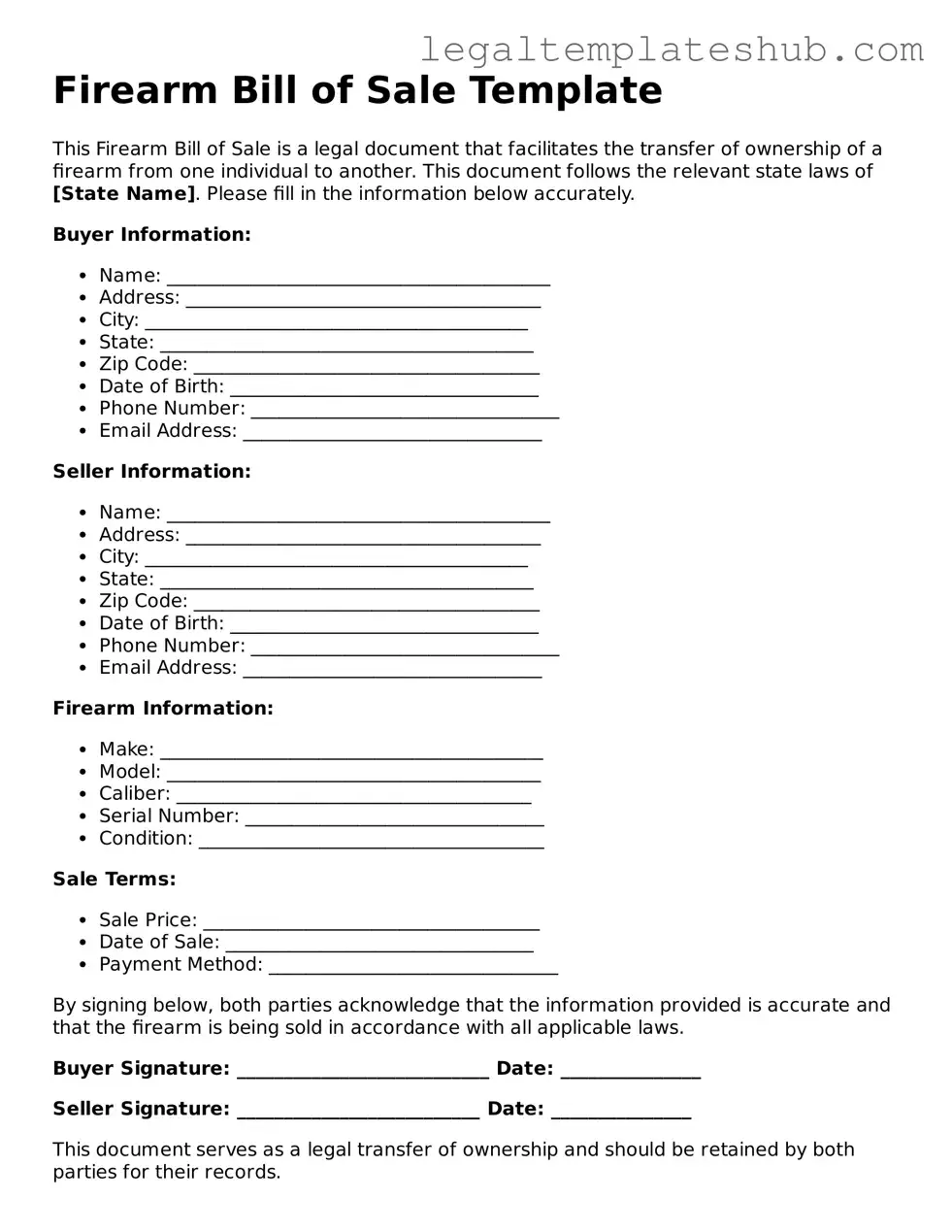Printable Firearm Bill of Sale Template
The Firearm Bill of Sale form is a legal document that records the transfer of ownership of a firearm from one party to another. This form serves as proof of the transaction and helps protect both the buyer and the seller. To ensure a smooth transfer, consider filling out the form by clicking the button below.
Access Editor
